
In the good old times things were easy! If I want to mount my good old Nikkor 20mm f3.5 reversed onto my camera for micro work I only need the tiny Nikon BR-2A reversing ring. The aperture ring of the camera must be set to the desired value - ready:
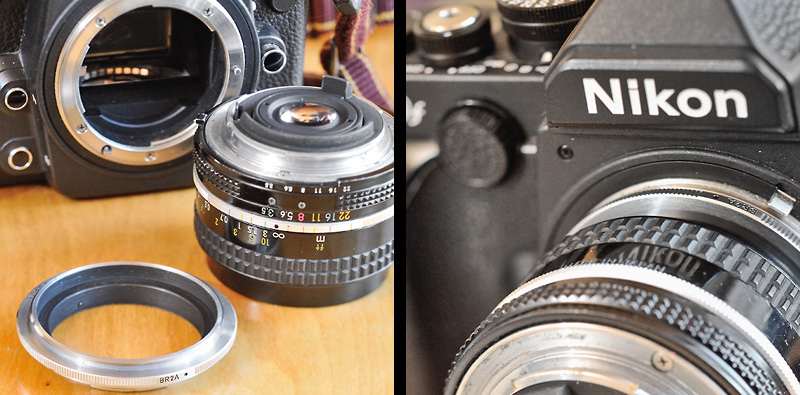
|
|
A reversed 20mm lens offers a magnification of around 3x. The BR-2A reversing ring has a male F-Mount on one side and a male 52mm screw mount on the other. Reversing rings are also offered by third-party manufacturers. |
A pity, Nikon does not offer acessories for using a 'G' lens reversed!
Nevertheless, it is possible. So, what do you need for reversing, for example, the Nikkor 20mm f/1.8G?

|
First of all: the 20mm f/1.8 has a filter thread of 77mm. You need one or more step-down rings in conjunction with the reversing ring for mounting the lens reversed.
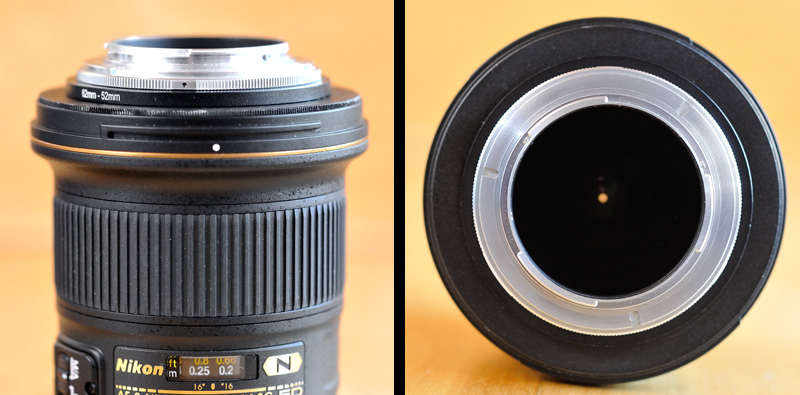
|
|
Nikkor 20mm f/1.8G plus 77-62 step-down ring, 62-52 step-down ring and BR-2A. |
The right image above shows the main problem: the aperture of a 'G' lens - if not properly mounted onto a Nikon camera - is closed (to the smallest aperture value). The finder image will be dark and the results will be soft due to diffraction.
As a quick-and-dirty solution you can open the diaphragm with the aperture lever of the lens (located within the mount) and fix it with sticky tape at the desired opening. Remember the formula a=f/d where "a" is the aperture value, "f" the focal length and "d" the diameter of the diaphragm. Simple relative rule: to halve the diameter of the diaphragm means to stop down two stops.
Many Canon photographers use Nikon lenses on their Canon cameras (popular is for example the 14-24mm). Adapting is possible with a very thin adapter without any optical elements. If the adapter is a "Nikon G" type, it has an integrated aperture setting additionally.
Of course, we don't need the EOS-Mount on the backside of the adapter. But this tiny ring allows us to control the aperture of our 'G' lens!
You can get such an adapter for a few euros on ebay for example. Here is my sample:
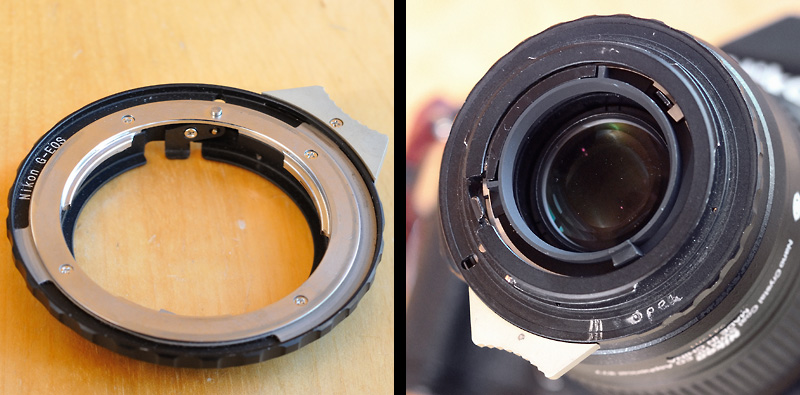
|
|
My EOS adapter for Nikon G. The big lever is for setting the aperture. |
The aperture setting of the adapter is a very simple one. There is no scale and there are no clicks or anything like that. As you can see I painted a scale onto the adapter by myself. "open" shows me the direction for opening the diaphragm and the three marks show the positions for one, two and three stops down. I determined the positions with the camera's exposure meter: set the camera to 'M' mode and to center-weighted metering, then open the aperture completely. Set the exposure indicator in the viewfinder to the zero-position by adjusting the shutter speed. Now you should close the aperture lever of the adapter until the indicator shows -1 EV. That's the position for one stop down. Close the lever further down to -2 EV, which is 2 stops down and so on. The markings are not super precise, but absolutely usable!
Do you miss the option to set a tube between your camera and your 'G' Micro-Nikkor? Have a look at these rings:
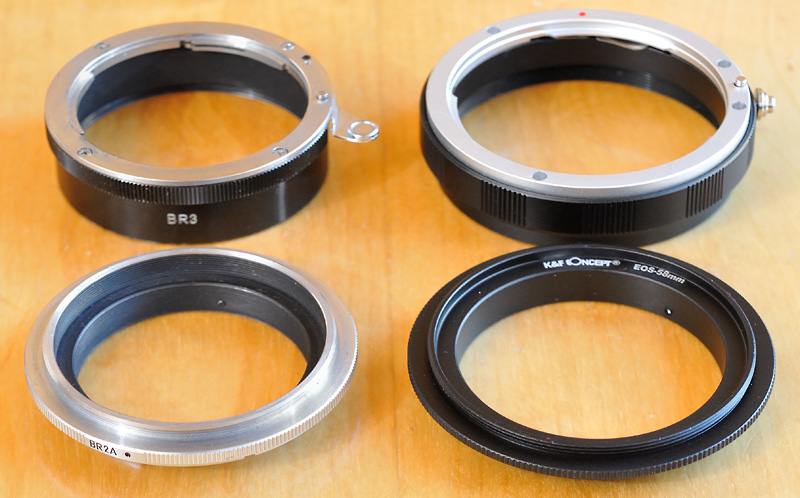
|
On the left side there are the Nikon BR-2A reversing ring and the opposite BR-3 tube with a female F-Mount and a female 52mm thread. On the right site you can see the counterparts of the BR-2A and BR-3 for the EOS world (with 58mm filter threads). You will get such a set for EOS for a few euros if you chose a third-party manufacturer. We need the BR-3 counterpart:
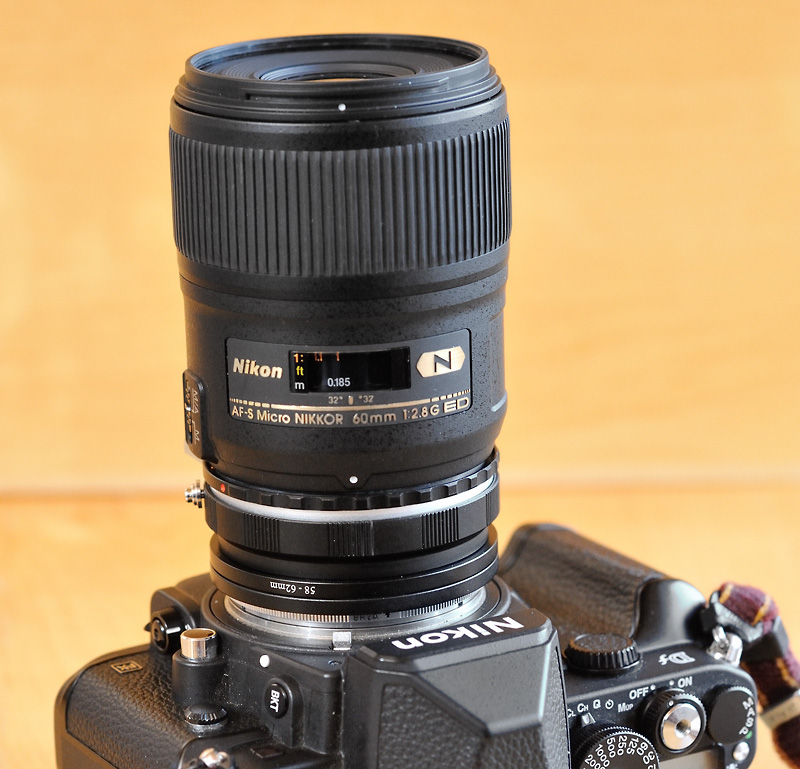
|
|
Let's build a tube for a 'G' lens: Nikon BR-2A plus 62-52 step-down ring plus 58-62 step-up ring plus EOS BR-3 counterpart plus EOS adapter for Nikon G. |
The aperture of an 'E' lens can only be controlled electronically. Thus, there is no chance for us to manage it with a few cheap rings! Please note: in contrast to a 'G' lens, the aperture of an 'E' lens ist wide open all the time.
Of course, it would be possible to construct such accessories. Hey Nikon, it's your turn!